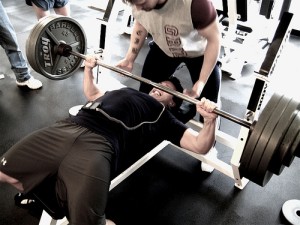 Circuit workouts are popular with people who consider that this type of training will allow them to work the most muscle groups in the minimum time and include cardio too. However, it is not a style of training that is favored by some professional trainers.
Circuit workouts are popular with people who consider that this type of training will allow them to work the most muscle groups in the minimum time and include cardio too. However, it is not a style of training that is favored by some professional trainers.
Here we look at the pros and cons and consider what circuit workouts may do for you.
Circuit training is a form of fitness training that involves moving quickly from one exercise to another. The different exercises are designed to cover all of the muscle groups. At the same time, the speed of the program means that the workout as a whole could be described as a cardio workout.
One of the benefits of circuit workouts is the variety that they offer. This can be very attractive to people who are easily bored by fitness training. For example, repetitive strength exercises can be so boring that many people find they are making excuses for skipping them. In this situation, a circuit training workout might be a good way to introduce strength training without making you quit exercising.
If you want to try a circuit training workout, you may want to begin with a short one. Assuming you are relatively fit, warm up with 5 to 10 minutes of fast walking or other light cardio exercise. Then try the following sequence:
1. Squats with lateral raise x 10
Use light to medium weights, and raise the arms out to the sides to shoulder height as you go down into the squat. Do not go further than is comfortable. As always with squats, check that the knees do not come forward of the feet.
2. Jog or fast walk, 5 – 10 minutes
Start slowly, gradually increasing speed, and slow down again before finishing.
3. Pushups x 10
If you cannot do pushups in the normal way, do them with your knees on the floor (on a mat or cushion for comfort), but keep the body straight without allowing it to bend at the hips.
4. Jump rope, 5 – 10 minutes
If you don’t have a rope, use an imaginary one! Jump with feet together. There is no need to jump high, a couple of inches is fine.
5. Lunge with biceps curl, hold for 30 seconds each leg
Start with one leg forward and go down into lunge position with both knees bent to 90 degrees. The front thigh is parallel with the floor, back thigh at 90 degrees to the floor but without the knee touching the floor. Slowly curl up the forearms into the chest, holding weights, then back down. Come back up to standing and repeat with the other leg. Avoid this exercise if you have knee problems.
Circuit workouts are very popular with some people. However, they are not for everybody. A more common style of fitness program involves alternating between strength and cardio on different days. Most fitness experts as well as bodybuilders prefer this style. They consider that it is more efficient to focus on one aspect of training at a time. In this way, the body has a chance to recover and build in that particular area on the ‘day off’ when you are doing something else.
Alternating strength with cardio also means that you can focus more fully on a particular muscle group or, on cardio days, on your heart rate. This can be safer as well as giving you a better workout, because you are more likely to be aware of exactly how far you can push for best results. For this reason alone, many experts advise against circuit workouts as a permanent part of your routine.



